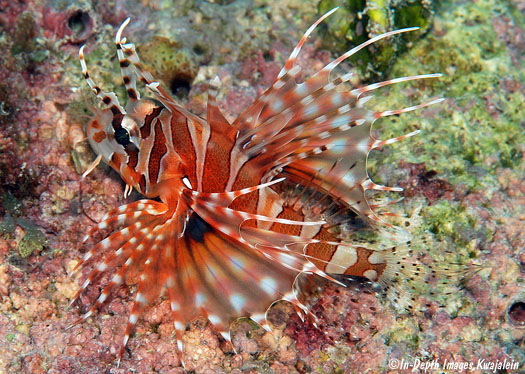
Dendrochirus zebra is relatively common at Kwajalein along shallow lagoon reefs, where it hides under or around the edges of rocks and within tufts of Halimeda algae in sandy areas. Rarely we have seen individuals on lagoon pinnacles, and even less often on the seaward reef. Although the stripes on the body and the "eyebrow" antennae somewhat resemble those of Pteropterois antennata, the membrane between the pectoral fin rays extends farther out towards the tips of the rays; in P. antennata, most of the length of the fin rays is not connected by membrane. Also, D. zebra lacks the distinct dark spots present on the pectoral fin membrane of P. antennata.

As in other lionfish, the dorsal spines are venomous. Dr. John Randall, in Reef and Shore Fishes of the South Pacific, reports being spined by a specimen that had been on ice for several hours. Yet, the pain was so severe he had to keep his hand immersed in hot water, which alleviated the pain, for two and a half hours before it could be tolerated out of the water.
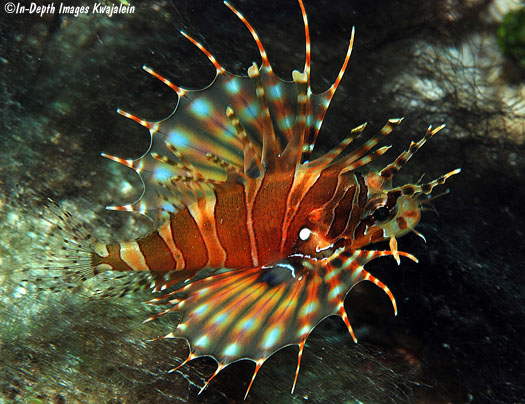
Since the fish are often hidden around the edges of rocks or in clumps of algae, divers need to be wary of where they put their hands or what they bump their knees into.
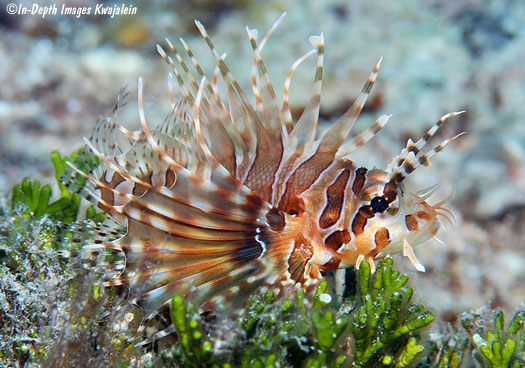
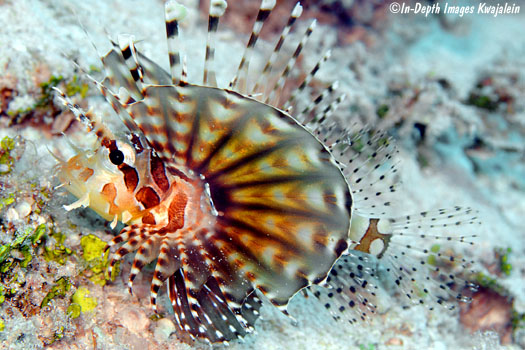
Beautiful fins.
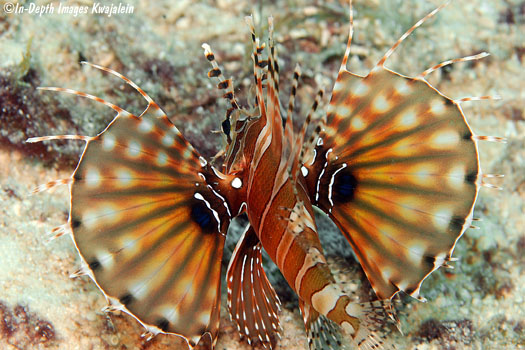
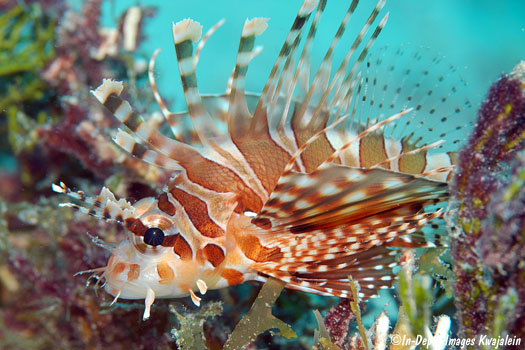
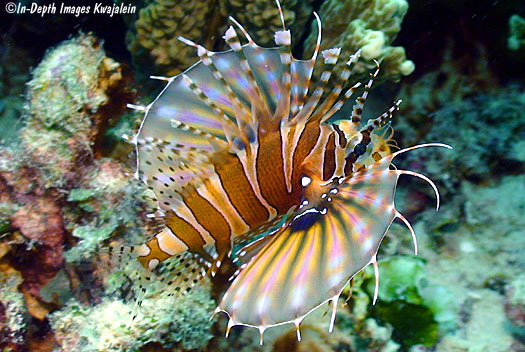
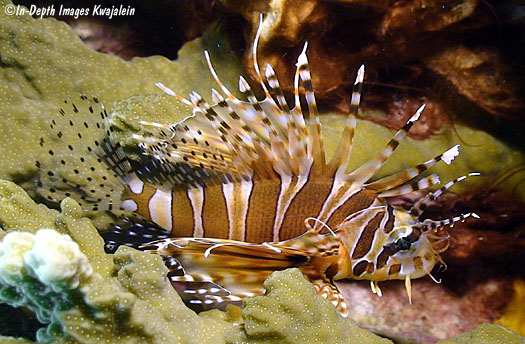
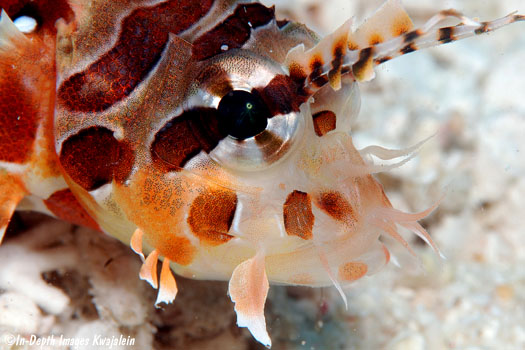
Created 27 June 2011